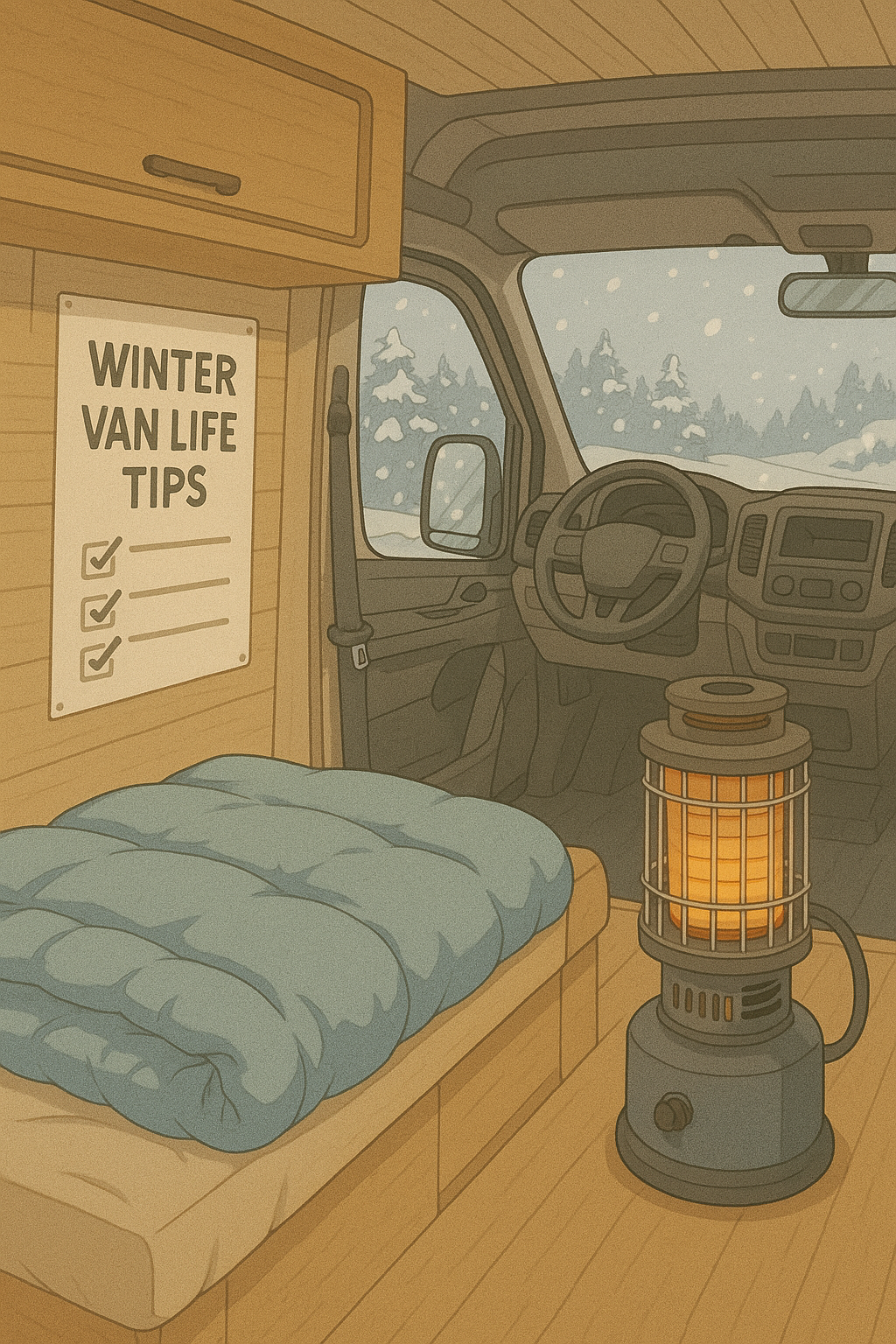Winter Challenges on the Road
Sub‑zero nights, short solar days, condensation, and frozen plumbing can quickly turn van life into survival mode if you’re unprepared.
Insulation First
Start with a well‑insulated envelope—closed‑cell foam in walls and ceiling, rigid board under the floor, and insulated window covers. Seal thermal bridges at metal ribs with neoprene tape.
Heating Options
Diesel Air Heaters
Efficient (0.1‑0.3 L h‑¹) and safe when properly installed. Service annually and keep the fuel line short to prevent gelling.
Propane Furnaces
Provide rapid heat but require exterior venting and gas certifications.
Electric Heat
Electric blankets or 12 V heated mattress pads draw far less power than fan heaters and can be a viable supplement if you have a large battery bank.
Keeping Heat In
- Attach reflective/insulated window covers at dusk.
- Hang a thermal curtain between cab and living area.
- Use door draft stoppers and silicone seals on barn doors.
Moisture Management
Ventilate even when it’s cold—run the roof fan on low while cooking and at night. Mop up condensation on windows each morning to prevent mould.
Cold‑Weather Power Strategy
Solar yield can drop by 50 % in winter. Pair panels with alternator charging or a portable blanket panel you can angle toward the low sun.
Essential Winter Gear Checklist
- -10 °C rated down duvet or sleeping bag
- Merino base layers and wool socks
- Hot‑water bottle and insulated flask
- Snow chains and traction boards if venturing into alpine areas
- De‑icing spray for door seals
Conclusion
With thoughtful preparation, winter van life can be both cosy and rewarding—think starlit snowfields and empty campsites. Stay warm, stay dry, and enjoy the quiet season!

